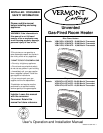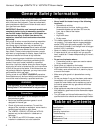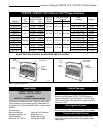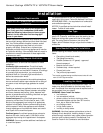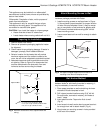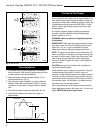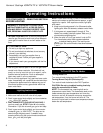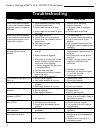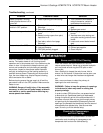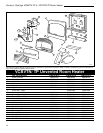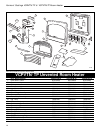
4
Vermont Castings VCBVTN/TP & VCPVTN/TP Room Heater
Installation
Installation Requirements
Fresh Air for Combustion and Ventilation
WARNING:
This heater must have fresh air for proper opera-
tion. If not, poor fuel combustion could result.
Read the following instructions to insure proper
fresh air for this and other fuel-burning appli-
ances in your home.
Modern construction standards have resulted in homes
that are highly energy-efficient and that allow little heat
loss. Your home needs to breathe, however, and all
fuel-burning appliances need fresh air to function
properly and safely. Exhaust fans, clothes dryers,
fireplaces and other fuel burning appliances all use the
air inside the building. If the available fresh air supply is
insufficient to meet the demands of these appliances,
problems can result.
Provide for Adequate Ventilation
Any space within a home can be classified in these
categories:
Unusually tight construction: The air that leaks
around doors and windows may provide enough fresh
air for combustion and ventilation. However, in buildings
of unusually tight construction, you must provide
additional fresh air. Unusually tight construction is
defined as construction where:
Walls and ceilings exposed to the outside atmosphere
have a continuous water vapor retarder with a rating of
one perm or less with openings gasketed or sealed
and;
Caulking or sealants are applied to areas such as joints
around window and door frames, between sole plates
and floors, between wall/ceiling joints, between wall
panels, at penetrations for plumbing, electrical and gas
lines, and at other openings.
Unconfined space: An unconfined space whose
volume is not less than 50 cubic feet for each 1,000
Btu/Hr of the aggregate input rating of all appliances
installed in that space. Rooms communicating directly
with the space in which the appliances are installed,
through openings not furnished with doors are consid-
ered a part of the unconfined space.
Confined space: A confined space whose volume is
less than 50 cubic feet for each 1,000 Btu/Hr of the
aggregate input rating of all appliances in that space.
WARNING: You must provide additional ventilation air
in a confined space.
For proper operation of the unit, provide fresh air
opening(s) to the room. Follow the National Fuel Code
NFPA54/ANSI Z223.1, for required size of combustion
and ventilation openings.
NOTICE: A qualified service technician should install
heater. Follow all local codes.
Gas Type
Verify the type of gas supply to be used, either natural
gas or LP (Propane), and make sure the marking on the
appliance rating plate agrees with that of the supply
gas. The rating plate is located on the side of the
heater, which indicates the type of gas that the heater is
orificed for.
Items Needed for Heater Installation
Before installing the heater, make sure you have these
items:
• Gas piping (check local codes)
• Test gauge connection
• Sealant (resistant to LP gases) - approved
thread compound
• Manual shut-off valve
*
• Sediment trap - where required
• Ground joint union
• Tee joint and pipe wrench
*
An installer supplied design-certified manual shut-off valve
with 1/8” NPT tap connection.
Locating the Heater
This heater is designed to be mounted on a wall. The
heater may also be located on the floor away from a
wall. An optional floor mounting base is required and cn
be purchased from your dealer.
WARNING: Never install the heater:
• in a bathroom,
• in a recreational vehicle,
• where curtains, furniture, clothing or other
flammable objects are less than 36” from the
front, top or sides of the heater,
• as a fireplace insert,
• in high traffic areas, or
• in windy or drafty areas.
WARNING: Vent-free heaters add moisture to the air.
Although this is beneficial, installing heater in rooms
without enough ventilation may cause mildew formation
from too much moisture content. See National Fuel
Code for Fresh Air for Combustion and Ventilation.



